On August 9, International Day of the World’s Indigenous Peoples is celebrated. In Russia there are 97 indigenous peoples (consisting of 500,000 people) of a total of about 190 peoples. Let Sputnik present you with pictures of the minor indigenous peoples of Russia.

There are 7 indigenous peoples living in Russia's Far Eastern Kamchatka Territory. Interestingly, about 2% of the population adheres to Slavic Neopaganism or to Siberian shamanism.
Above: A girl wearing traditional clothes dances at the First Fish festival at the ethnic camping ground of Kiv'in Antum in Yelizovo District of Kamchatka Territory.
Above: A girl wearing traditional clothes dances at the First Fish festival at the ethnic camping ground of Kiv'in Antum in Yelizovo District of Kamchatka Territory.

The Nenets are an indigenous people in the northern arctic area of Russia, and some live at the Taymyr Peninsula. Taymyr is a peninsula in the Far North of Russia in Siberia, which is the northernmost part of the mainland of Eurasia.
Above: The delegation of the Taimyr Dolgano-Nenets Autonomous District at the Russian Lands and Peoples' Parade.
Above: The delegation of the Taimyr Dolgano-Nenets Autonomous District at the Russian Lands and Peoples' Parade.
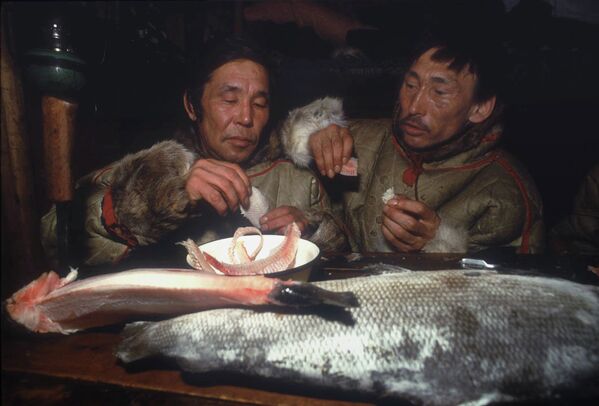
Nenets people have a shamanistic and animistic belief system which stresses respect for the land and its resources. They used to have a clan-based social structure.
Above: Reindeer herders eat stroganina in the city of Dudinka, Taimyr (Dolgan-Nenets) Autonomous District.
Above: Reindeer herders eat stroganina in the city of Dudinka, Taimyr (Dolgan-Nenets) Autonomous District.
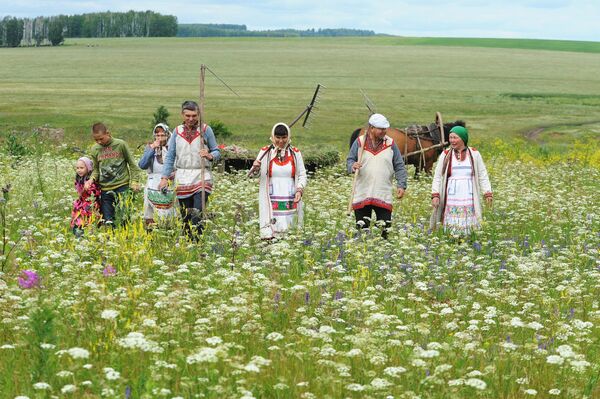
The Mari, a Finno-Ugric ethnic group, has traditionally lived along the Volga and Kama rivers in central Russia. Most of Maris currently live in the Mari El Republic, with significant populations in the Bashkortostan and Tatarstan republics.
Above: People out haying in the village of Malaya Tavra, whose residents are ethnic Mari people.
Above: People out haying in the village of Malaya Tavra, whose residents are ethnic Mari people.
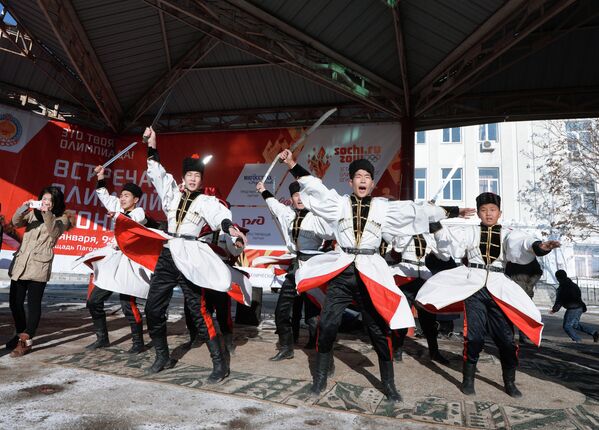
The Kalmyks belong to the Mongolic ethnic group, which originated in the eastern parts of Central Asia. Currently most of them live in the autonomous republic of Kalmykia on the western shore of the Caspian Sea in Russia. Did you know that Kalmykia has Europe's only Buddhist government?
Above: Performance by a team during the Olympic torch relay in Ellista, Republic of Kalmykia.
Above: Performance by a team during the Olympic torch relay in Ellista, Republic of Kalmykia.
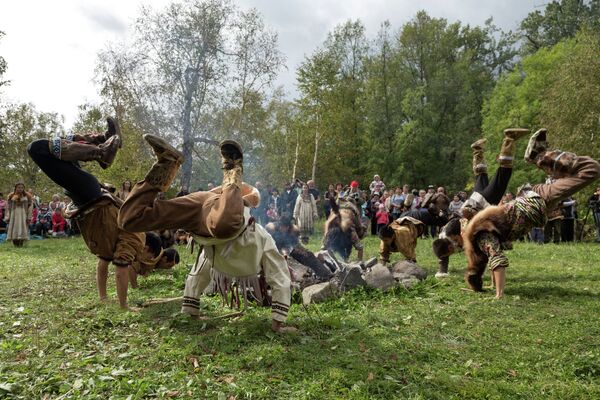
Traditional beliefs of Itelmens, one of the indigenous people of Kamchatka, used to be animism, totemism and fetishism, which is mostly associated with the worship of spirits. Itelmens also practiced shamanism with women as shamans. From the middle of the XVII century Itelmens accepted Christianity.
Above: Participants of the Alhalalalai ritual of giving appreciation to nature for its gifts dance around a camp fire in the Itelmen village of Pimchakh, Kamchatka Peninsula.
Above: Participants of the Alhalalalai ritual of giving appreciation to nature for its gifts dance around a camp fire in the Itelmen village of Pimchakh, Kamchatka Peninsula.
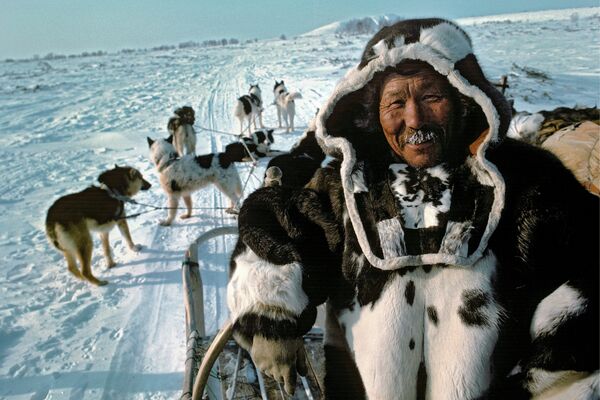
Koryaks live in Kamchatka Territory in Russia's Far East. Coastal Koryaks' lifestyle is based on local fishing and marine mammal hunting, while inland Koryaks are more nomadic. They are reindeer herders and follow the herds as they graze with the seasons.
Above: A dog-team driver of the Koryak village of Ilpyr on the Russian Pacific coast.
Above: A dog-team driver of the Koryak village of Ilpyr on the Russian Pacific coast.
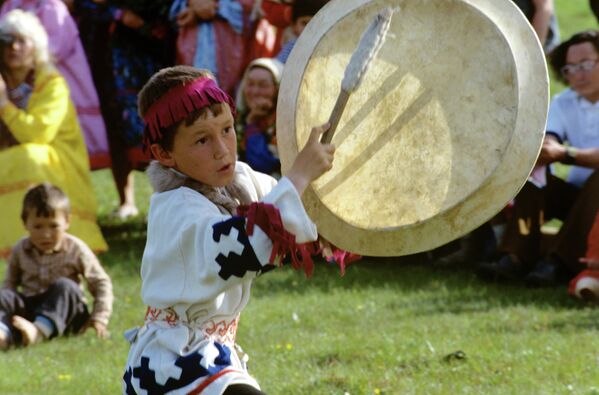
Mansi are an indigenous people living in Khanty–Mansia in western Siberia. Since the 16th century when most of western Siberian territories were under the Russian rule.
Above: A young participant in an annual festival of Mansi culture performing a shaman dance with a special drum.
Above: A young participant in an annual festival of Mansi culture performing a shaman dance with a special drum.
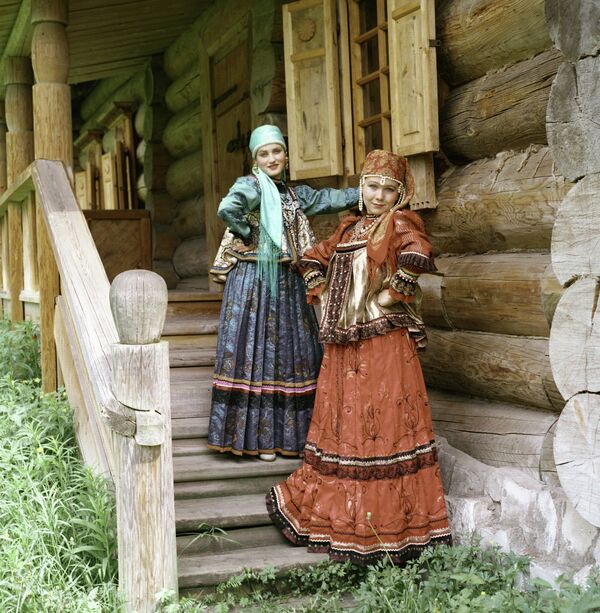
Izhma Komi live primarily in the north of the Komi Republic in Russia's north. Komi Izhma are traditionally engaged in nomadic reindeer herding.
Above: Girls wearing Komi-Izhem folk costumes.
Above: Girls wearing Komi-Izhem folk costumes.
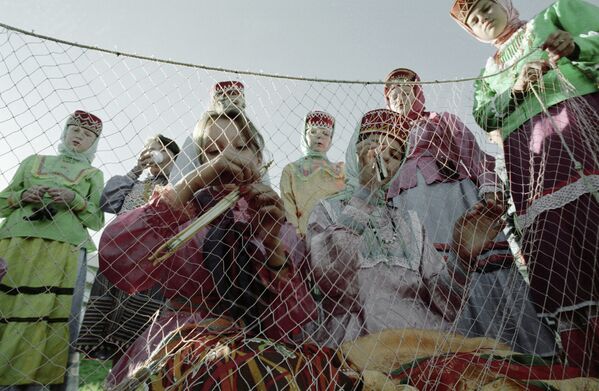
The Saami people or Laplanders are indigenous Finno-Ugric people inhabiting the Arctic area of Sápmi, which nowadays encompasses parts of far northern Norway, Sweden, Finland and the Kola Peninsula of Russia.
Above: Saami delegates at a conference of 26 ethnic minorities of the Russian North and Far East.
Above: Saami delegates at a conference of 26 ethnic minorities of the Russian North and Far East.
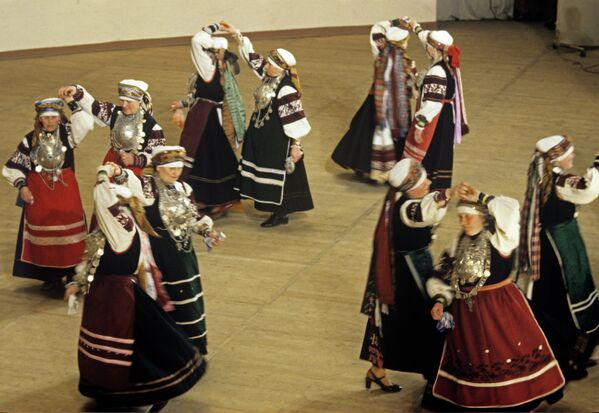
Setos are an ethnic minority currently living in Estonia and north-western Russia. Setos are mostly Orthodox Christians of Estonian nationality.
Above: A ceremonial dance of the Setos small ethnic Estonian group living in the Pskov Region at the Tchaikovsky concert hall.
Above: A ceremonial dance of the Setos small ethnic Estonian group living in the Pskov Region at the Tchaikovsky concert hall.

Chuckchi are ingenious people living in Russia Far North. Traditionally they used to live in igloos, houses built of snow, which can be easily compacted.
Above: A nomadic camp of Chukchi reindeer herders in the village of Kanchalan, the Chukotka Autonomous Region.
Above: A nomadic camp of Chukchi reindeer herders in the village of Kanchalan, the Chukotka Autonomous Region.
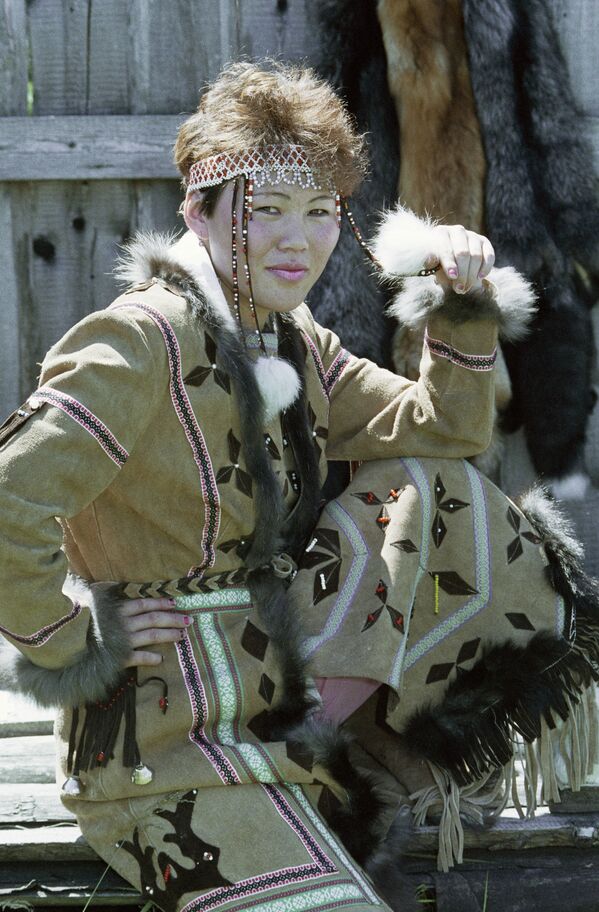
The Evenks are indigenous peoples of the Russian North as well as in China and Mongolia. The traditional costume of Evenks is “adapted to the cold but rather dry climate of Central Siberia and to a life of mobility.
Above: An Evenk girl in a traditional garment.
Above: An Evenk girl in a traditional garment.
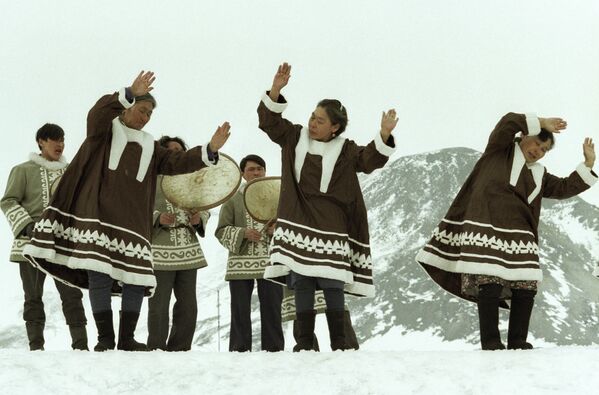
The Eskimo are the indigenous peoples who have traditionally inhabited the northern circumpolar region from eastern Siberia across Alaska, Canada and Greenland.
Above: The Solnyshko Eskimo Dance Company from the Novoye Chaplino camp performing a folk dance.
Above: The Solnyshko Eskimo Dance Company from the Novoye Chaplino camp performing a folk dance.

